
Long Term Review: 2013 Specialized Enduro Expert EVO
Every bike has compromises to some extent. Picking the bike that’s right for you means choosing the faults you can live with. This theory is ultimately how I settled the Specialized Enduro Expert EVO’s place in an industry that seems to be shying away from the 180mm pedal-friendly bikes. Over the course of the test period it became my “one bike” and the overall ability surprised me. The Enduro Expert EVO is not without compromises, but it certainly has a spot in the mountain bike market today.
Where the Enduro EVO fits in is something I questioned in my first article, containing initial thoughts and an overview of the build that can be found HERE. As the owner of a downhill bike and a mid-travel all-mountain bike, I knew it wasn’t aimed at me. It’s for the gravity chasers who aren’t like me; those that need a bike that handles lift access and shuttle days, while still providing a pedal friendly platform for all the other rides in a year. Riders that don’t want to base their trail choice on the bike they’re riding will really appreciate the Enduro EVO. That being said, the dual ability does not come without some faults and the following paragraphs will outline all the strengths and compromises I found testing the Enduro Expert EVO so you can decide if it’s right for you.

Can you live without a downhill rig? The Enduro Expert EVO makes it a little easier by being comfortable at speed on the big bike trails.
The first thing that caught my attention with the Enduro Expert EVO was the climbing ability. I did not expect a 180mm coil sprung frame to pedal uphill so well. On technical climbs the bike did not bounce and suck up the out-of-the-saddle power I put into the cranks. Even when sitting in the granny ring on the second lap of rooty climbs, the bike certainly proved why it has the “Enduro” part of its name.
Praise given, I did encounter several compromises, which was not unexpected since the bike is designed to go downhill better than up. The main effect the big-hit capable build has on the ascent is adding a fair amount of weight. It’s not the easiest bike to get to the top of a long climb, but if you’re willing to sit down, shut up, and spin the big bike to the top it should get you there without requiring any walking.
The other climbing complaints came from the lack of a water bottle mount and the Specialized Command Post BlackLite. It’s obviously not super easy to work a water bottle mount onto a frame with so much travel, but it was a feature I missed having. As for the dropper post, four weeks in the mud resulted in the lever needing a two thumb push to move the post and four factors had me put normal post on for the remainder of the test: the claimed 125mm of travel for the medium and large frames was only 100mm on my large test bike, the cable loop at the lowest heights sometimes caught my shorts or kneepad, if there was not a big enough loop the post wouldn’t always shoot all the way up and would end up locking into the middle position, and replacing the internally-routed cable and housing required a fair amount of work. Only 195mm of the dropper post fit into the frame, but I was able to shove 225mm of an old Banshee seatpost into the frame which may not be enough post for some riders, but – being very similar to my 2010 Specialized Enduro – was something I was able to live with.
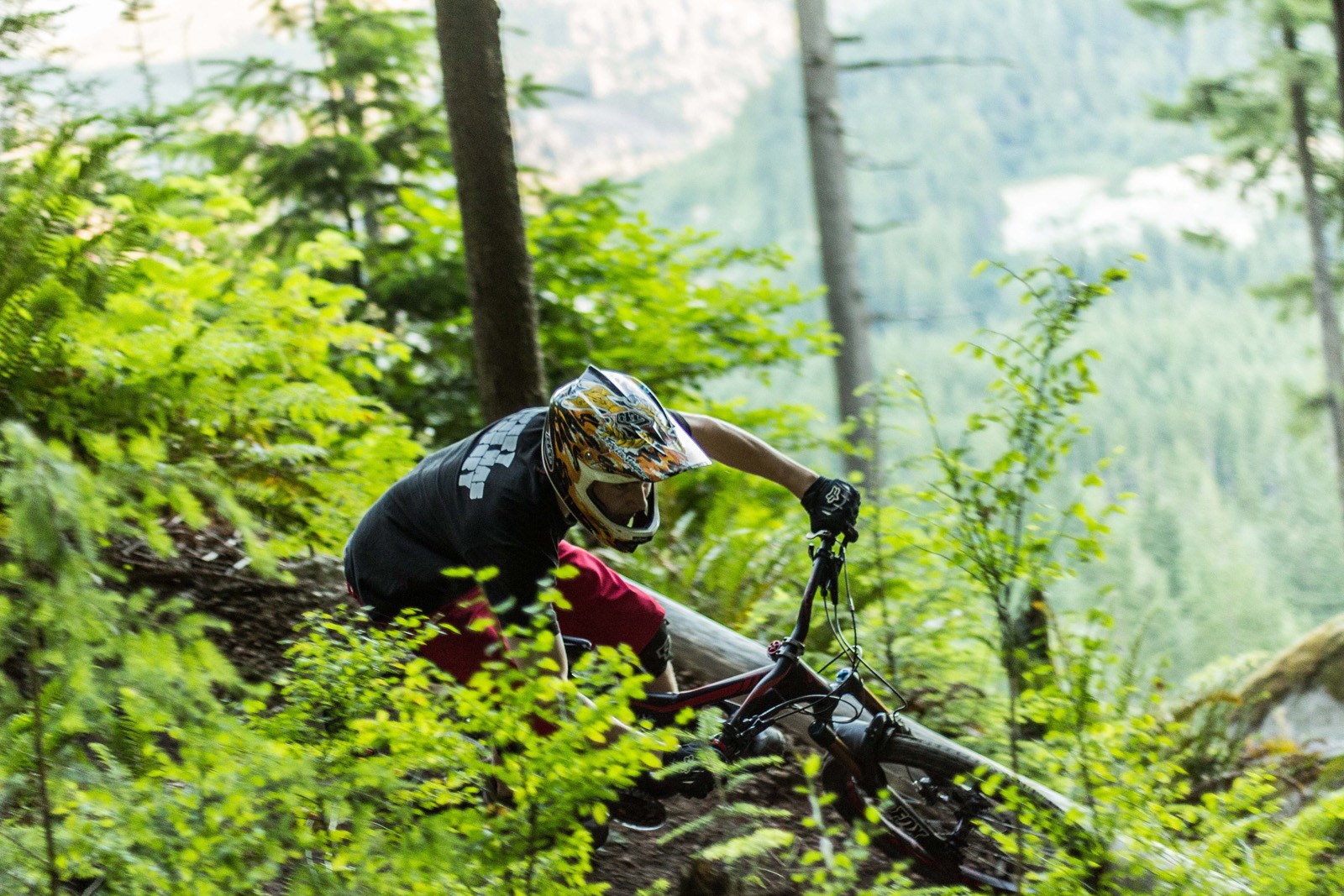
I thoroughly enjoyed the Enduro EVO on a variety of ups and downs, but the kinked seat tube limits seatpost length.
There’s less to critique and more to praise once the Enduro Expert EVO is pointed downhill. The first marvel I noticed was the bike’s response to pumping. I’m a rider who constantly pumps for speed, and the 180mm machine gave me a pretty good response when I pushed it through rollers and onto downslopes. This ability is one that needs to be taken advantage of since the bike does have a relatively low bottom bracket and 175mm crank arms on the medium and large build. In other words, constantly pedaling for speed on uneven terrain will result in the occasional pedal strike. Still, many trails require pedaling and it didn’t take too long for me to instinctively learn where to pedal to avoid hitting the ground.
As you can see I didn’t have a big problem keeping the bike moving, which was ideal because I felt more comfortable when carrying speed. Taking techier trails and features at slow speeds seemed more challenging than just blasting through. This characteristic could easily be attributed to my stiff suspension set-up since I set up the bike at SuspensionWerx with 15% sag front and rear instead of the recommended 25%. The bike was certainly comfortable on the tech at speed though, not quite at the ability of a full-on downhill bike, but well enough that I didn’t shy away from a single trail on the Enduro Expert EVO.
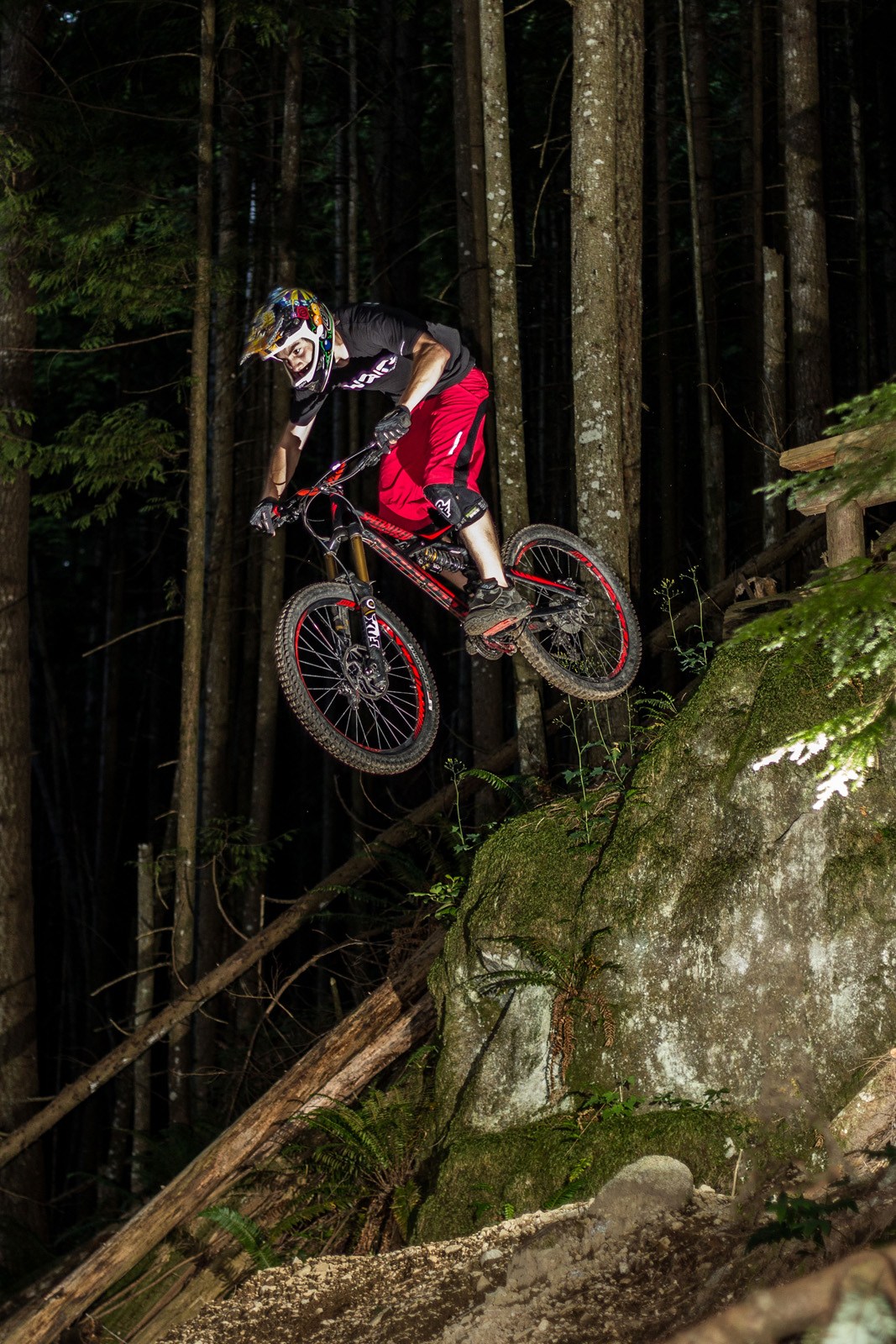
No need to skip one of the bigger features on Arduum. I did get shown up by an ex racer boy, but I blame the tired rider for the Enduro not being sideways.
Smoother lines in the bike park were where the long travel Enduro really excelled. I loved trying to go that little bit faster, air bits of trail to places I normally wouldn’t have wanted to land, and generally popping or pumping the bike off all the features I could. There were no problems sending the Enduro Expert EVO on real jumps either. I actually became so comfortable I started seeing how high I could get on everything. I was constantly trying to go sky high on normal jumps and high mark the hips. I knew the bike would handle the impact and was jumpy enough to get me where I wanted.
The only thing I couldn’t get as good on the smooth trails as I could on my downhill bike was tight berms. The Enduro Expert EVO didn’t handle them poorly, but I just never had the same kerpow out of the corner that I did on my bigger bike. I think the reason behind this is the long wheelbase of the Enduro, since it is the longer than any other bike I ride. It’s certainly not a deal breaker for me as it’s not often I come across tight berms out in the mountains. In other words it was a compromise I was okay with; I’m more than happy to give up a little shred in the tight stuff in order to have the confidence charging tech and comfort getting air.
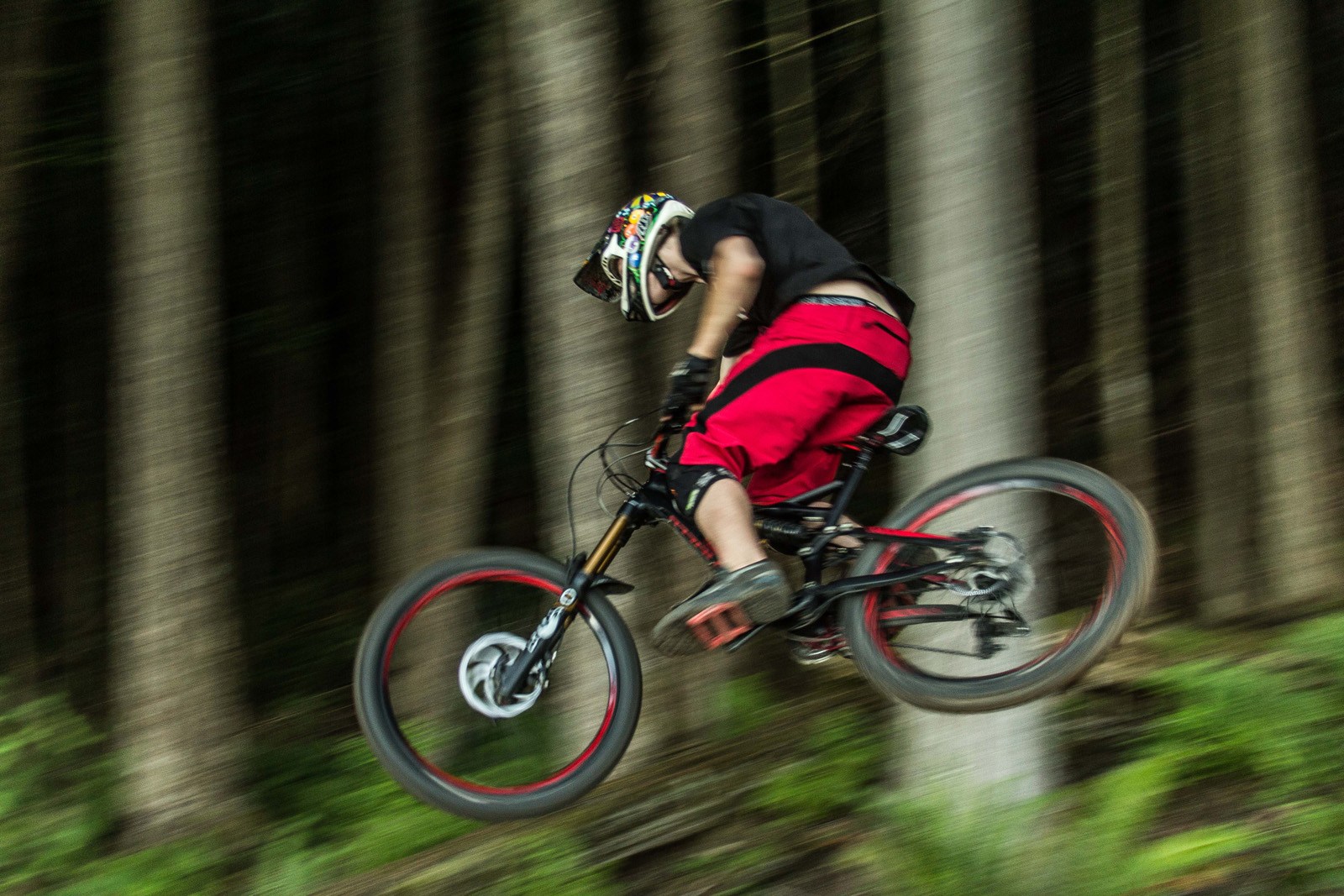
Going fast and jumping around are both a strong suit of the Enduro Expert EVO. The combination makes for a fun ride.
The biggest surprise from the Enduro Expert EVO happened once all the ups and downs were concurred. After months on the trails, including nine Whistler Bike Park days and countless local rides, my test bike is in great shape. The bike still feels solid with no weird play or noise and only very minor maintenance was ever required. A worn out set of organic brake pads were replaced after four weeks with no problems since (NSMB BroCard partner) Fanatyk Co in Whistler stocks the sintered pads for the four piston Elixir/XO Trail brakes and swapping them is a simple procedure. Three very fast and easy rear derailleur cable replacements were also necessary, but all the original drivetrain components are still on and functioning well. The only real hassle was replacing the cable and housing on the dropper post, but after doing so it feels the same way it did when it came out of the box.
Even the tires held up, which is impressive for the amount of trail they covered and their respectable performance during that time. The 2.3” Specialized Butcher SX dual-compound rubbers were one of the components I didn’t really think about when I was riding because they were always working. I never even suffered a flat tire. The wheels inside also fared well with the rear wheel just barely out of shape and the front still a perfect circle. The downside to this setup is that neither the tires nor wheels are feathers on the scale.
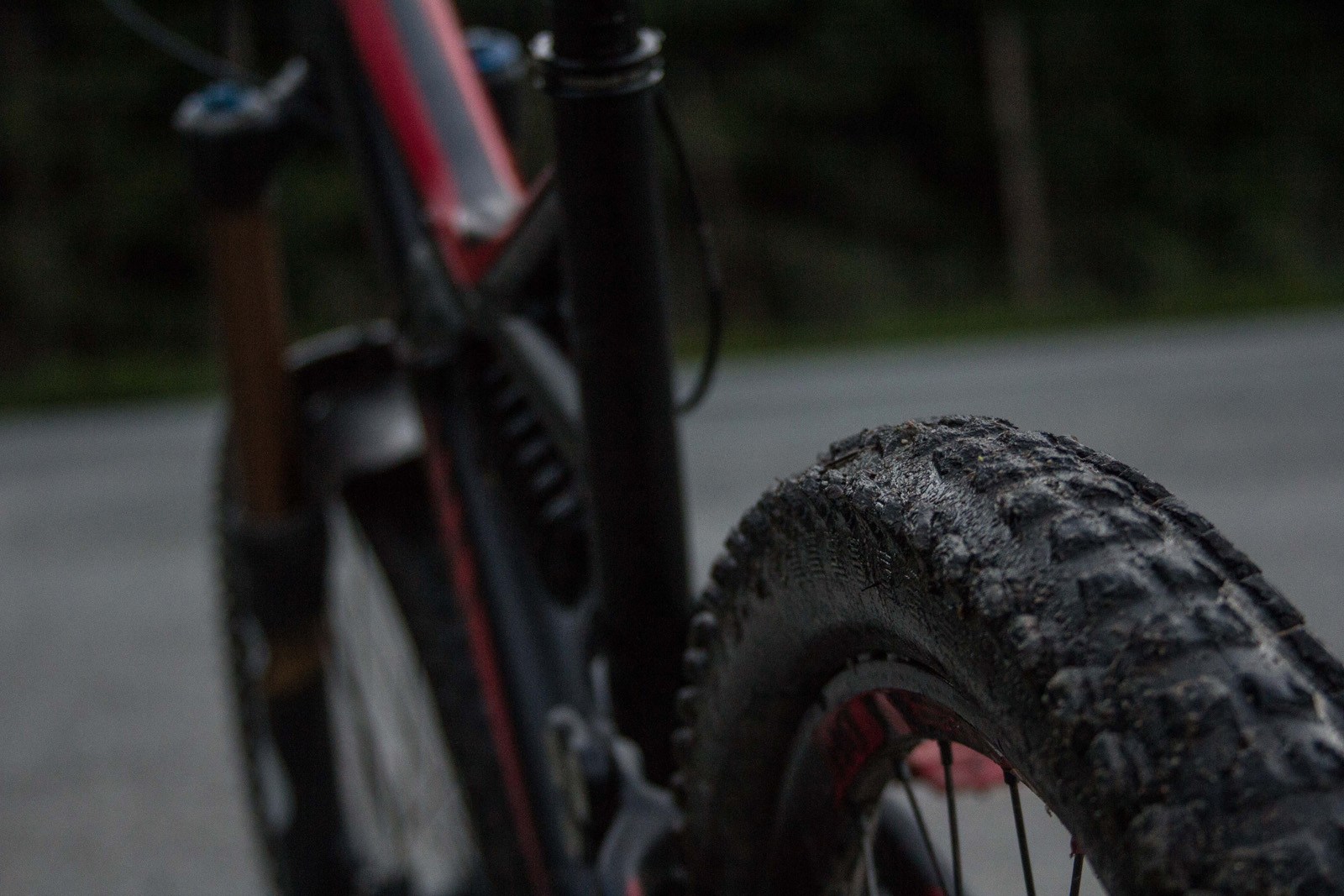
Check out that tread. The Enduro Expert EVO held up pretty well for the amount of time it spent in the bike park.
The FOX 36 Van RC2 is another piece of the build that I really liked throughout the test period. With 15% sag it rode high in the travel, but used all 180mm to suck up frequent hucks. I never felt nervous sending this fork into whatever may have been in front of me at full blast, and adjustment knobs were easily accessible if I did need a tweak.
While the Cane Creek Double Barrel Coil rear shock has an almost identical confidence inspiring story, adjustments require a special tool that I didn’t always remember to bring. On more than one occasion I wanted to tweak my rebound slightly, and had to wait and remind myself to do so once I got home. It’s also important to note that Specialized does not have a standard rear shock mount, so the options to change the rear shock are very limited. The only other option appears to be the Fox Van R that comes on the regular Enduro EVO build.
The top of the line bits bring into question the value of this build. At $5299 CDN, you could easily pay more for a bike, but it is a couple grand more than the alternative build option. Seeing as I opted for a normal seatpost over the Specialized Command Post BlackLite, the regular build is a step ahead for me here. The drivetrain performed well over the test period, but the clutch system and cage lock I like so much is featured on both bikes. And while the carbon cranks do save a bit of weight and feature a removable spider, it’s not a place I worry about weight or a feature I will use on this bike. I am a fan of the wheels and tires, but the wheels aren’t light enough to pay the extra coin for and both builds share the Butcher SX rubber. I was initially a fan of the Avid XO Trail brakes, but after going back to my personal stoppers I lost interest in the XOs; I wouldn’t go out of my way to equip my bike with them, but I certainly wouldn’t replace them with anything else either.
When you really boil down the differences between the expert and regular Enduro EVO builds, you’re left looking at the suspension. With only two options in the back, the extremely adjustable Cane Creek Double Barrel Coil is a good thing to have. Not having the chance to ride the other option I can’t comment on whether or not the adjustability is necessary though. As for the fork, I quite liked it. However no direct comparison with the X Fusion Vengeance leaves me unable comment again. I can say that after a good amount of time with the Cane Creek Double Barrel Coil and FOX 36 Van RC2, these two components had the Enduro Expert EVO perform very well everywhere I rode.
As a “one bike”, the Enduro Expert EVO proved itself to be very capable. While there are compromises, they’re very manageable and rarely held me back. The 180mm pedal friendly frame will be appreciated by many riders, but the regular build option could be the more popular choice if the different fork and shock are comparable to the performance from those on the expert build.
Garrett didn’t find a lot of negative points in his time on the EVO, but the question of whether a 180mm bike has a place in your stable is quite personal… what do you think?
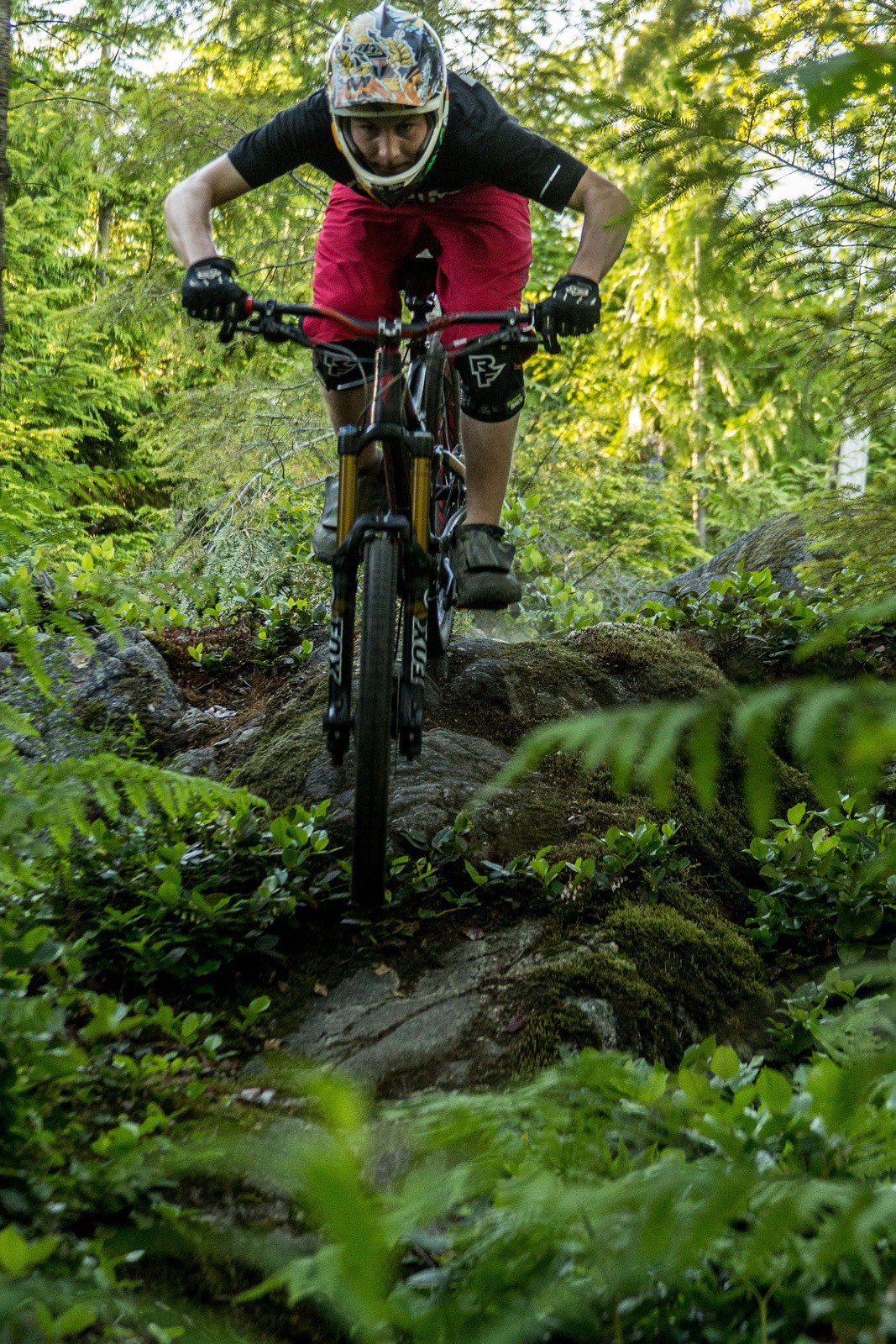







Comments
Brother Lu
10 years, 9 months ago
The Orb seems like a bit of a turd.
Reply
Morgan Taylor
10 years, 9 months ago
We took this bike to SuspensionWerx for setup and found it had a medium spring in the fork and (I can't remember which) but a firmer one out back. Out of the box it was not balanced. We had the choice of either going firmer up front or softer out back, and Garrett chose firmer based on our conversation with James. With the tunability of the Double Barrel it came out really nice.
Personally I find "baseline sag" numbers to be dependent on the rider, and a firmer setup is often preferred by riders who really go hard (including Garrett). Front-rear balance, as tuned through compression settings after the right spring is determined, does a lot more for a bike's performance on the trail than worrying too much about specific sag numbers.
Reply
Orb
10 years, 9 months ago
Cheez1ts,
I think what you had setup work for you. The comment I made is not without merit or understanding. Reducing sag affects the ability of the wheel to follow the ground. Load change at the wheel become more abrupt and traction and weight balance is affected. An example, after you hit bump and shock is on the rebound stroke the wheel will track down the back side of the bump if there is enough sag (droop travel). If there is not enough sag then the wheel will drop down to bottom of the next bump while losing contact to the ground at the same time. The wheel that is following the ground will load up the suspension more smoothly and maintain excellent tracking and traction. The wheel that loses contact with the ground will transfer weight to other wheel (the weight balance will move to the other wheel unless you compensated). When the wheel does make contact the suspension will load more abruptly which reduces tracking and traction. The flip side of this at 15% sage both sides is you gain 1.05” of the rear and 0.45” front vertical over a conventional setup f 20: r30 sag. Bottom line, the ability for the rider to compensate for these changes is much bigger part then the suspension itself. Generally, the smoother things are and the less rider compensation the faster one will be but that is debunked all the time and why it can be difficult to tune MTB suspension. FYI, adding more spring preload to the spring by reducing sag or increasing damping does not increase stiffness in any way. It does increase the load to move the spring and damping only changes the rate of load. If some tell you other then ask why.
Reply
Orb
10 years, 9 months ago
Though the review was accurate in general although have slight different take on few things. Bottom line, bike will climb well and is comfortable anything the bike park can throw at it. The limitations for me were the fox fork get sketchy at higher speeds with increasing bump size but still manageable. If the fork has a more progression it would keep up to the rear suspension in ride quality and bump absorption. The fork and the marginal braking power of the X0 trails are defiantly the weak points at the bike park. Specialized did exchange my command post promptly to 125 mm post since I to had a 100 mm post. Good customer service experience for me.
I found it odd that reviewer set the bike up with so little sag on the rear. Regardless of 2 or 4 wheel variety of devices this has one clear effect and results in very skittish unpredictable type of handling through rougher sections. The flip side is jumping and big hit landings would be improved….endless trade offs when setting up suspension.
If you heading to the bike park less than 8 time a year and want to ride anything else out there then this bike is great pick for all rounder.
Reply
Garrett Thibault
10 years, 9 months ago
The bike was set up at SuspensionWerx and I was advised to run the suspension slightly stiffer if I planned to ride aggressively. It was a good fit for my riding style. I generally go as straight and fast as I can through rougher sections so skittish or unpredictable feelings didn't really come up during the test. I also enjoy jumping/ taking big hits.
Reply
Buster Bluth
10 years, 9 months ago
Any thoughts on doing a review of the NON-Evo 2013 Enduro? Maybe the comp model? Looks like a good bike for the buck now that they have allegedly improved it's climbing performance.
Reply
Dirk
10 years, 9 months ago
How has nobody commented on this review yet?
Anyhow, thanks for upping the game on riding shots in reviews, Garrett.
My one comment is that Specialized has soooooo many models and wheel sizes and specs, this convoluted combination of model descriptors makes things feel a bit…distant to me.
Reply
Please log in to leave a comment.